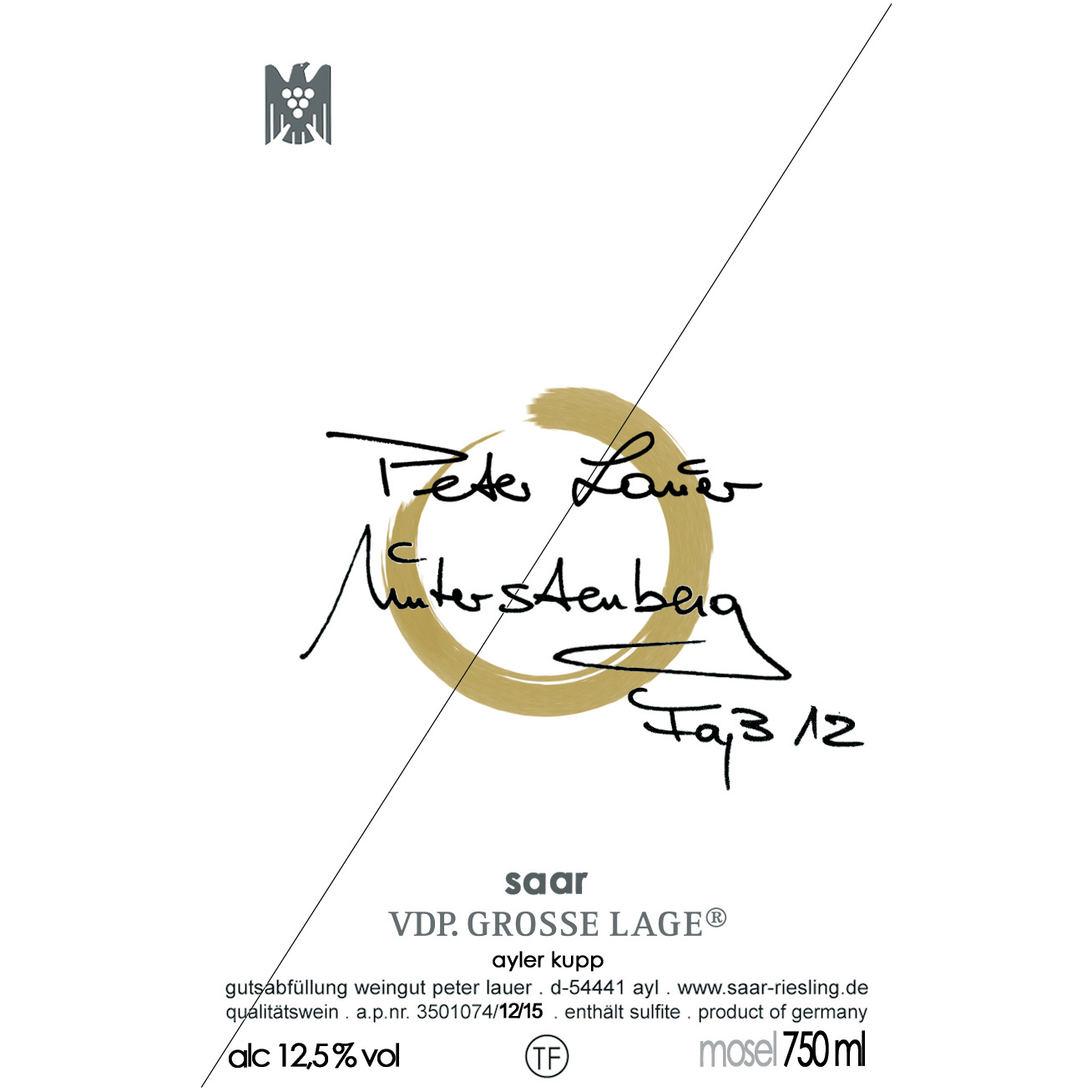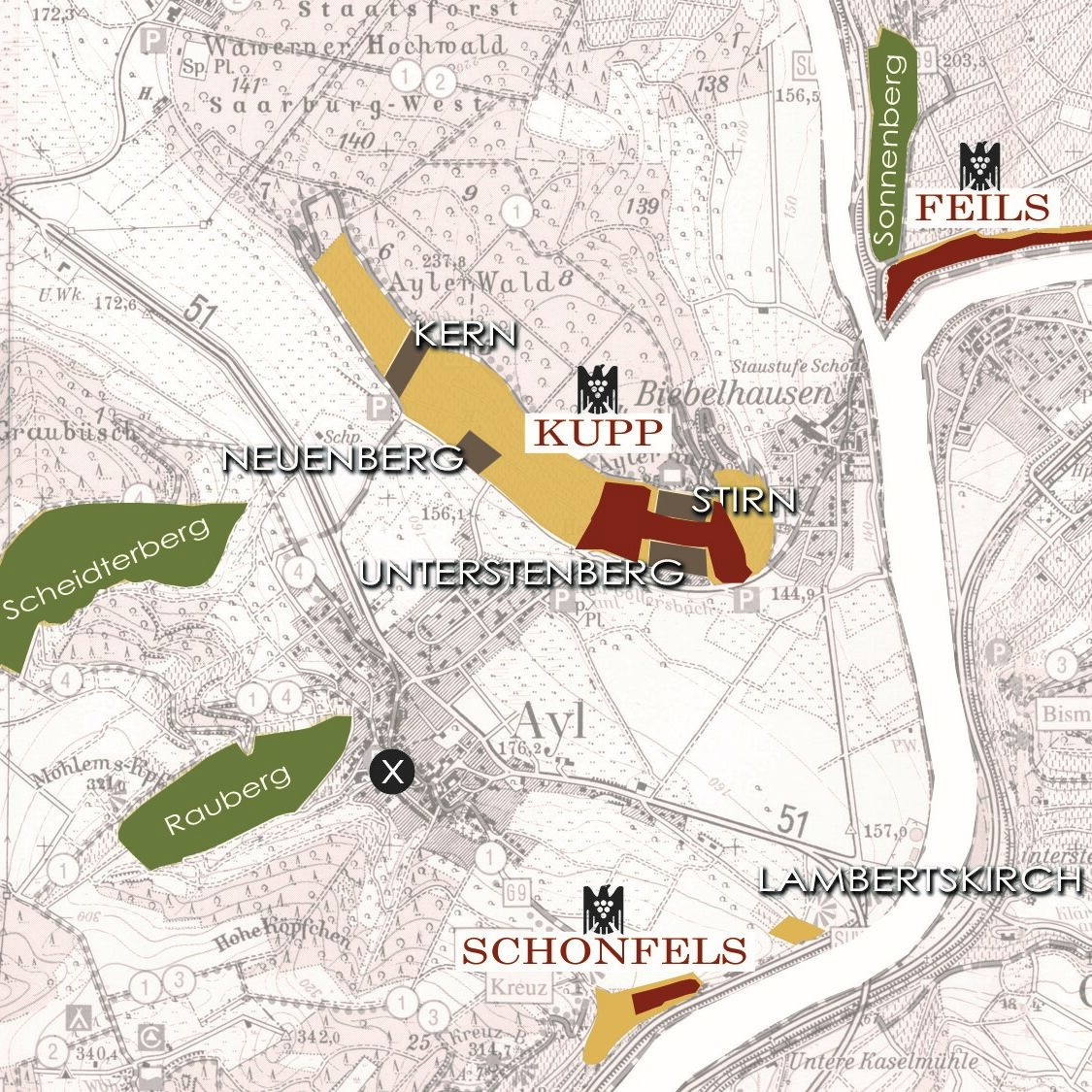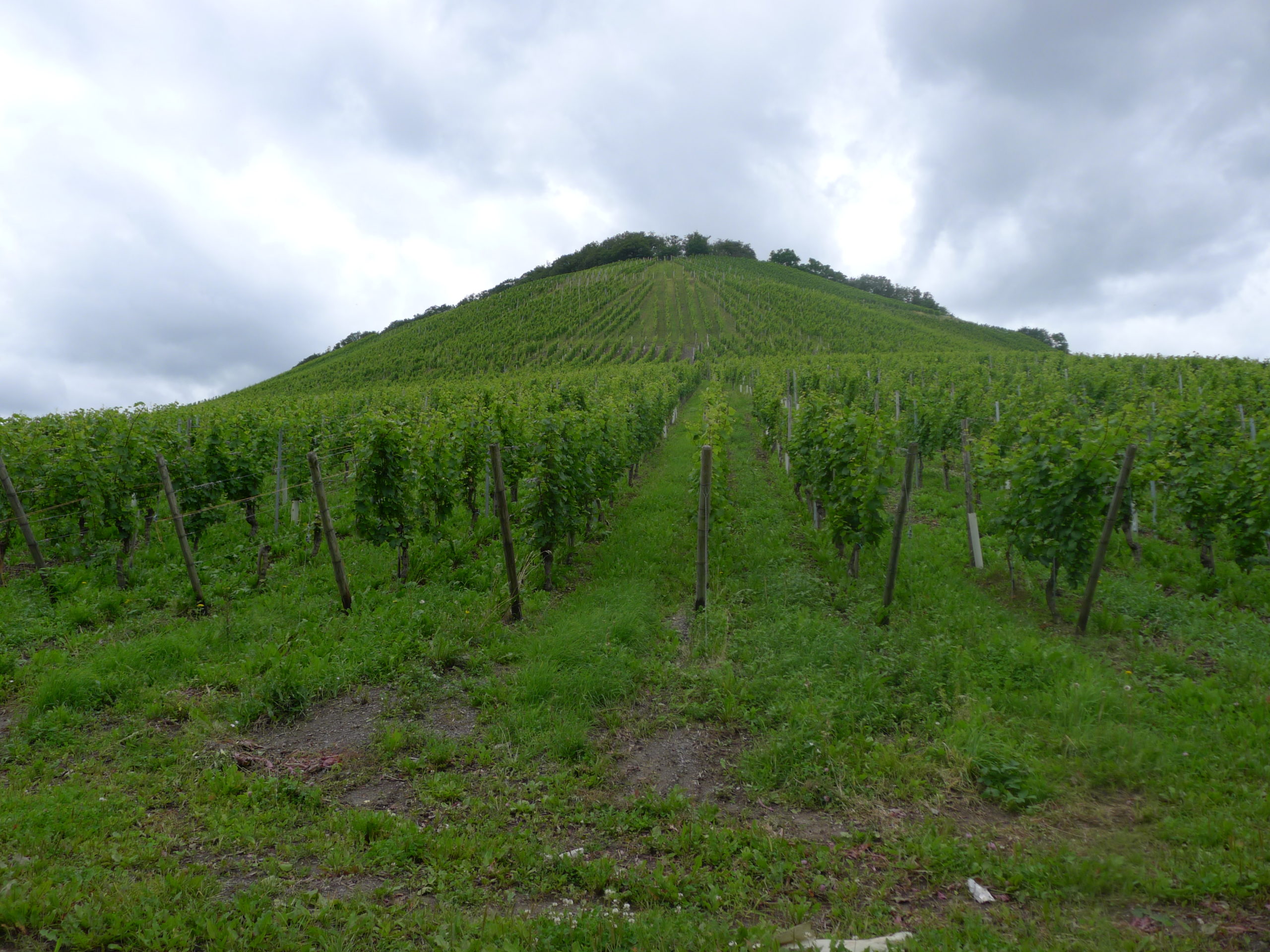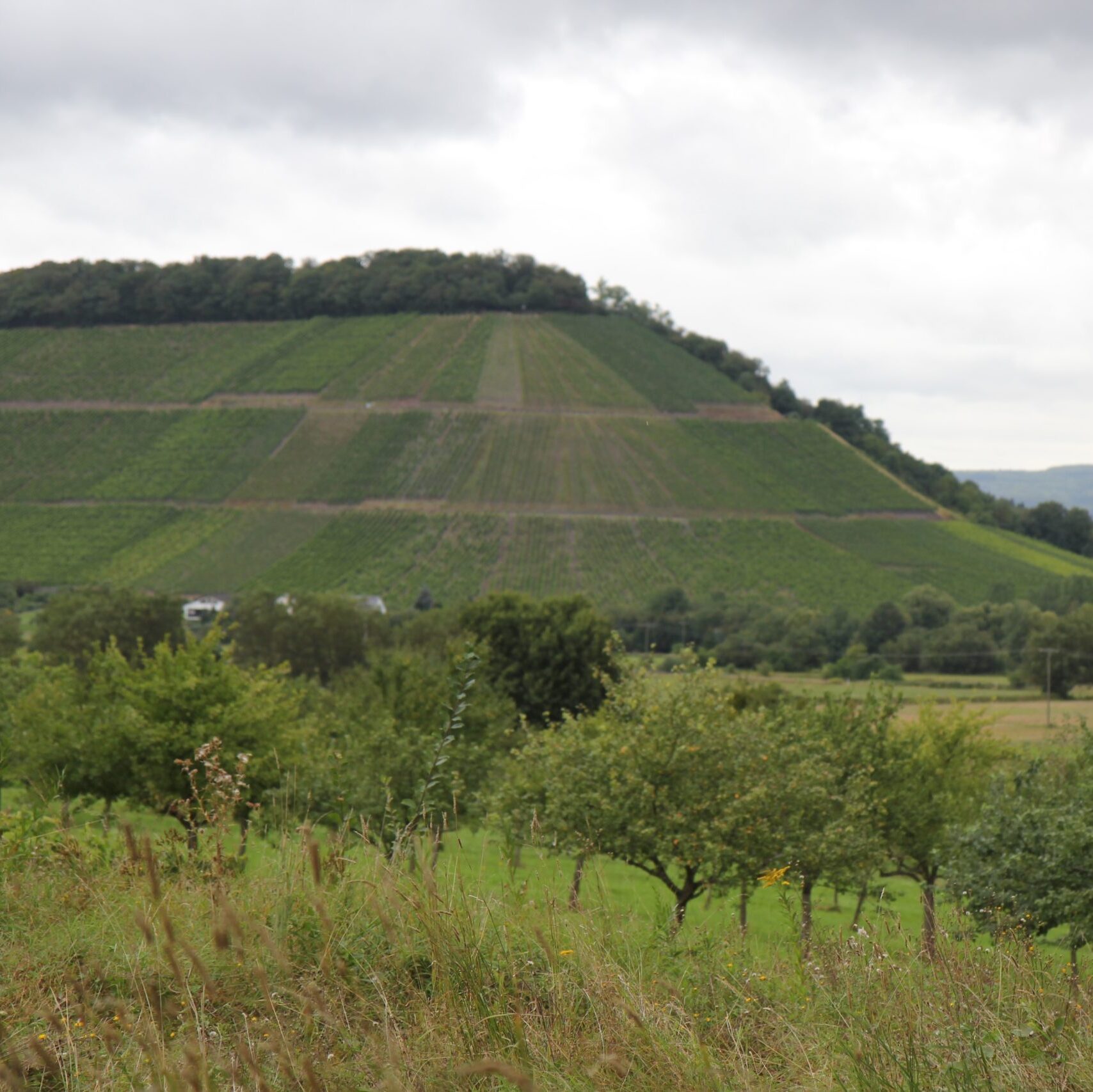LauerRiesling No. 12 Unterstenberg 2023 (750ml)
Find a Bottle Near You
Find a Bottle
Over the 15+ years I’ve been closely following Florian’s wines the Unterstenberg (sourced from the lower part of the Kupp mountain, “unter” the “berg”) has shed sugar, from a bit under 20, to then 15 and even lower. Once again, for 2023, this wine is legally dry at around 9 grams residual sugar. I love it in this dry / drier form, with the schmaltzy, glycerin depth of the mid-palate and the profound, smoky savory quality (found in many of Lauer’s 2023ers). This is a serious damn bottle of wine and one of the highlights of the collection.
“Unterstenberg” can be translated, roughly, as “under the mountain” – the “unter” being “under,” the “berg” translating to “mountain.” And indeed when you click the map to the left, you see the white rectangle denoting the vineyard, there at the base, the bottom, of the Kupp.
The location of this vineyard shapes absolutely everything about the wine; everything runs down the mountain after all. Thus the Unterstenberg is one of the few sites that rarely lacks for water, even in drier years. The vineyard’s location means it is also the final resting place for most of the fine, weathered slate and soil that has been washed down over the centuries. The larger rock, unable to be moved by water, remains up top, while Unterstenberg has a relatively deep, mineral-rich soil. The water and the soil mean that this is a rather vigorous site; the growth here can be explosive. Finally, the site’s location at the bottom, nearing the valley, means that there can be some botrytis down here, though of course Florian will select most of this out.
What does this mean for the wine itself? It tends to be one of the broadest and most powerful of Lauer’s dry wines. Because of the ample water, it has a mineral expression that is multifaceted, complex, deep. Interestingly, Unterstenberg is one of the few Lauer wines that has changed its signature dramatically at times; in the late 2000s the wine tended to be rather “Feinherb” in style. Since 2012, for reasons unknown to Florian, the wine has been fermenting closer to dry, having a “dry tasting” style not dissimilar to “Senior” and has shed sugar, first from a bit under 20, to then 15 and now in 2019 and 2020, even lower – it is dry this vintage at under 9 grams residual sugar. I love it in this dry / drier form, with the schmalzy, glycerin depth of the mid-palate emphasized and defined by the acidity’s cut and lift.
For those of you that know Lauer’s Stirn bottling, it is exactly the opposite of Unterstenberg, located only 300 feet up the hill. If you wanna have fun, open these bottles side by side and have a master-class in terroir. Only 300 feet apart, yet the difference between them is night and day.
| Country | Germany |
|---|---|
| Unit Type | 750ml |
| Alcohol | 12.5 |
| Wine Class | Still White |
| Pack Size | 12 |
| Address | Saar |
| Estimated Price | $48 |
| Mosel Fine Wine | The 2023 Unterstenberg N°12, as it is referred to in the central part of the label, is a dry wine (with 8 g/l of residual sugar) made from fruit picked in the similarly named prime Lieu-Dit forming the south-southwest facing, front part of the original Kupp hill (at the foot of the hill). This bright hay- yellow-colored wine offers a very attractive nose made of pear, creamy elements, spices, grapefruit puree, white flowers, and smoke. It is nicely playful on the subtly creamy palate and leaves a smooth feel of herbs and minerals in the finish. The aftertaste develops more cut. Despite being open, we feel that this wine will benefit from a few years of bottle aging to integrate its elements and develop more cut. It could then warrant a higher rating | No 72 Sep 2024 |



